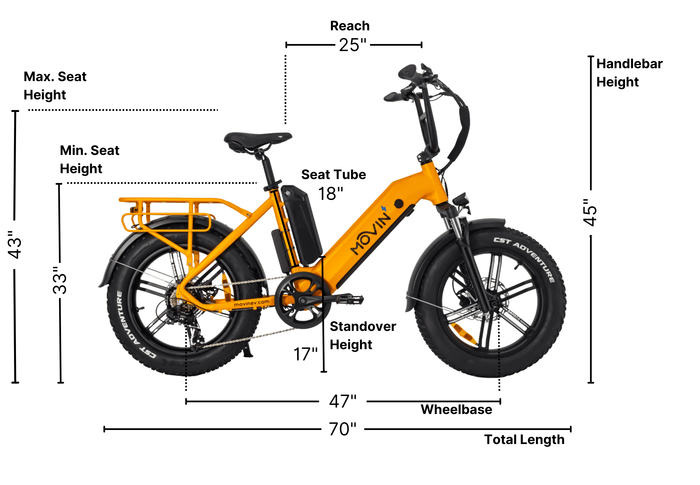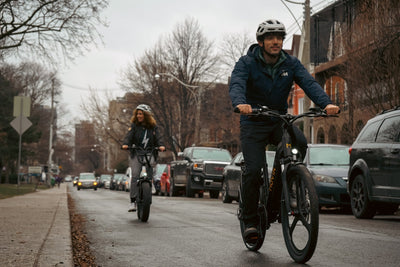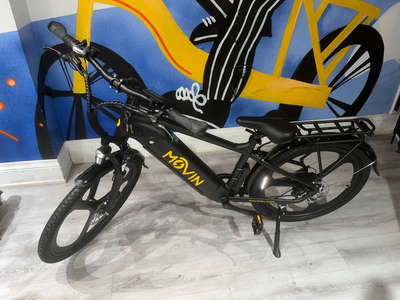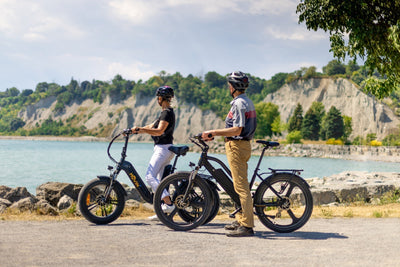Selecting the correct electric bike size isn’t guesswork—it’s science. A poorly sized e-bike leads to discomfort, inefficiency, and even injury. Below, we break down exactly how to find your perfect fit using measurements, charts, and frame specifics.
Step 1: Measure Your Height & Inseam
1. Height:
- Stand against a wall (no shoes).
- Mark the top of your head, then measure from the floor to the mark.
2. Inseam:
- Stand with feet 6” apart, back to the wall.
- Place a hardcover book between your legs (spine up, as if it’s a bike seat).
- Measure from the floor to the top of the book.
Step 2: Use the Electric Bike Size Chart
Match your height and inseam to the frame size (in centimeters) using this table:
|
Rider Height (ft/in) |
Rider Height (cm) |
Inseam (cm) |
Mountain E-Bike |
Urban E-Bike |
Hybrid/City E-Bike |
|
5’0” – 5’3” |
152 – 160 |
68 – 72 |
43 – 46cm |
47 – 50cm |
44 – 48cm |
|
5’4” – 5’7” |
160 – 170 |
73 – 77 |
47 – 50cm |
51 – 54cm |
49 – 53cm |
|
5’8” – 5’11” |
172 – 180 |
78 – 82 |
51 – 54cm |
55 – 58cm |
54 – 57cm |
|
6’0” – 6’3” |
183 – 190 |
83 – 87 |
55 – 58cm |
59 – 62cm |
58 – 61cm |
|
6’4”+ |
193+ |
88+ |
59 – 62cm |
63cm+ |
62cm+ |
Notes:
- Mountain E-Bikes: Smaller frames for agility on trails.
- Urban/Hybrid: Taller frames for upright comfort.
- Full Size Electric Bikes: Typically start at 55cm for riders 5’8”+.
Step 3: Calculate Frame Size Using Inseam
Multiply your inseam (in cm) by these ratios for precise sizing:
|
E-Bike Type |
Formula |
Example (Inseam = 80cm) |
|
Mountain E-Bike |
Inseam x 0.685 |
80 x 0.685 = 54.8cm |
|
Urban E-Bike |
Inseam x 0.66 |
80 x 0.66 = 52.8cm |
|
Off-Road/Gravel E-Bike |
Inseam x 0.7 |
80 x 0.7 = 56cm |
Electric Bike Frame Types & Fit Tips
Not all frames suit all riders. Here’s how to match your body to the bike:
1. Full Size Electric Bike (55–62cm):
- For riders 5’8”–6’6”.
- Best for stability, cargo bikes, or long-distance touring.
- Avoid if: You’re under 5’7”—may struggle to straddle the frame.
2. Compact/Step-Through Frames (43–54cm):
- Ideal for electric bike small size riders (5’0”–5’7”).
- Easier to mount/dismount, popular for city commuting.
3. Electric Bike for Plus Size Riders:
- Look for reinforced frames with weight limits of 300–400 lbs.
- Wider tires (2.4”+) and double-walled rims for durability.
Critical Signs Your E-Bike Is the Wrong Size
- Knee Pain: Saddle too low/high strains joints.
- Numb Hands/Wrists: Handlebar too far or too close.
- Lower Back Pain: Frame too long, forcing overreach.
- Instability: Can’t touch the ground when stopped (frame too tall).
Adjustments to Fine-Tune Your Fit
Even with the right frame, tweak these for perfection:
1. Saddle Height: At full pedal extension, knee should bend 15–20 degrees.
2. Handlebar Reach: Should feel natural—no stretching or hunching.
3. Stem Length: Swap for shorter/longer stems to adjust posture.
Test Ride Checklist
Before buying, ask:
- Can I stand over the frame with 1–2” of clearance?
- Do I comfortably reach handlebars without slouching?
- Does the bike feel stable at low speeds?
Why Brand Size Charts Matter
Sizing varies between manufacturers. Always check the brand’s e bike size chart, as sizes may differ slightly. For example, one brand’s “medium” frame might be another’s “large.”
Final Tip: A well-sized electric bike full size or compact model feels like an extension of your body—effortless and intuitive. Measure twice, test ride once, and enjoy the ride!
Data sourced from industry standards and expert guides.







